What is Chromatin?
Chromatin is a complex of DNA, RNA, and proteins, found in eukaryotic cells. Its main proteins are the histones. They are containing a big quantity of amino acids (arginine and lysine), facilitating the binding to the molecule of DNA. The histones are five types—H1, H2A, H2B, H3, H4.
Additionally, the chromatin contains more than a thousand other types of proteins. They are involved in different activities, including gene expression and replication of DNA.
The functions of the chromatin are:
- to compress DNA in a dense and compact form,
- to support the macromolecule of DNA for mitosis,
- to prevent damage in the DNA macromolecule,
- to control the DNA replication and gene expression.
Chromatin in the cells may be compact to a varying extent, depending on the cell’s current state and cell cycle stage. Generally, there are three levels of organization of the chromatin: euchromatin, heterochromatin and chromatin in metaphase chromosomes.
- 1. Euchromatin – less condensed. DNA forms nucleosomes by wrapping around the histone proteins. In the euchromatin, the molecule of DNA is unfolded and can be transcribed and used. This is the active form of the chromatin.
- Heterochromatin – highly condensed, compressed, and compact. Multiple histones package into a 30 nm fibre, comprising of compact nucleosome arrangements (heterochromatin). It is not suitable for transcription and serves to transmit information.
- Chromosomes – a higher organization of the chromatin is achieved during the division of the cell. The chromatin then is the most condensed and chromosomes are formed.
However, there are many exceptions to this organization (e.g. birds’ red blood cells, trypanosomatid protozoa).

What is Nucleosome?
The basic structural element of the chromatin in eukaryotes is the nucleosome. The core of the nucleosome is a structure of eight proteins – histones (two pieces of H2A, H2B, H3, H4). Around it is wrapped a part of the molecule of DNA of about 150 bases, called core DNA. The nucleosomes are arranged next to each other and connected by threads of about 20-90 nucleotides (linker DNA), to which bind other histones (H1).
Unlike core DNA, linker DNA may vary in length. These variations are important for the diversity of the gene regulation; however, the structure formation of the chromatin does not depend on the length of the linker DNA.
Each of the histones of the nucleosome core has a flexible nitrogen end consisting of about 11-37 amino acid residues. This structure goes out of the well-packaged nucleosome. It’s called a histone tail. Typically, amino acids like lysine and serine are present in the histone tail. Their function is to neutralize the negative load of DNA.
Technically the nucleosome includes the core particle and one of the linker regions; however, this term is often used only for the core particle.
Difference Between Chromatin and Nucleosome
1. Definition
Chromatin: The chromatin is a complex of DNA, RNA, and proteins, found in eukaryotic cells.
Nucleosome: The nucleosome is the basic structural element of the chromatin in eukaryotes.
2. Composition
Chromatin: Chromatin is composed of DNA, RNA and proteins. The main proteins are the histones (H1, H2A, H2B, H3, H4). In addition to the histones, the chromatin contains more than a thousand other types of proteins and big quantity of amino acids (lysine and arginine).
Nucleosome: Nucleosome is composed of eight histone proteins (two pieces of H2A, H2B, H3, H4), core DNA, and linker DNA.
3. Appearance
Chromatin: Chromatin has the appearance of a supercoiled fiber structure.
Nucleosome: Nucleosome has the appearance of a bead in a string.
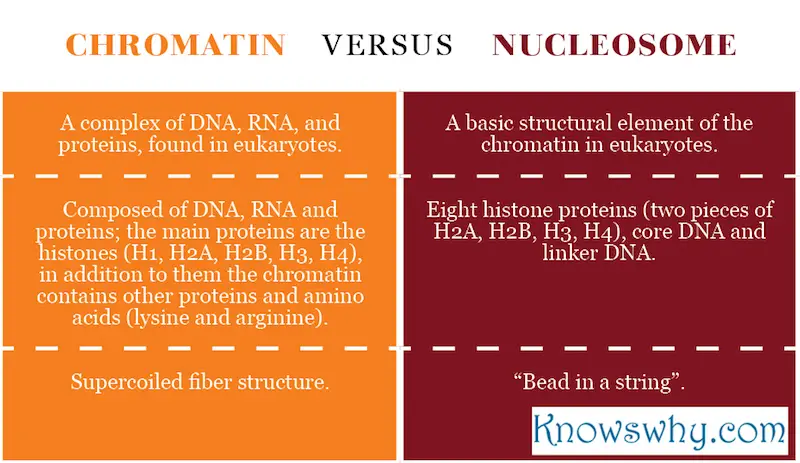
Summary:
- The chromatin is a complex of DNA, RNA, and proteins. Generally, there are three levels of organization of the chromatin: euchromatin, heterochromatin and chromatin in metaphase chromosomes.
- The basic structural element of the chromatin in eukaryotes is the nucleosome.
- Chromatin is composed of DNA, RNA and proteins. The main proteins are the histones (H1, H2A, H2B, H3, H4). In addition to the histone, the chromatin contains more than a thousand other types of proteins and big quantity of amino acids (lysine and arginine).
- Each nucleosome is constructed of a core of eight proteins (histones), core DNA, wrapped around it and linker DNA.
- Chromatin has the appearance of a supercoiled fiber structure; the nucleosome has the appearance of a bead in a string.
Author: Dr. Mariam Bozhilova
Dr. Mariam Bozhilova has a Master’s degree in Ecology and PhD in Botany. Her main professional interests are in the fields of ecology, biology and chemistry. She has more than 10 years of professional experience in scientific research and environmental consultancy.

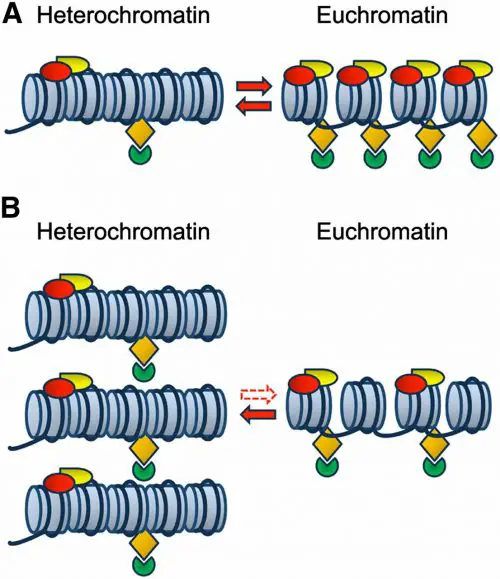

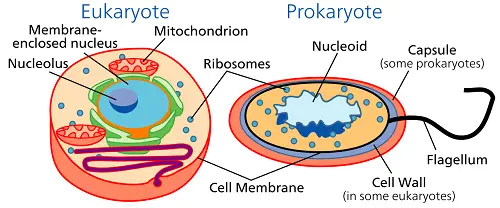
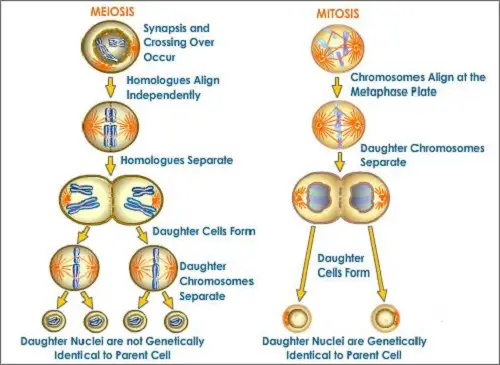
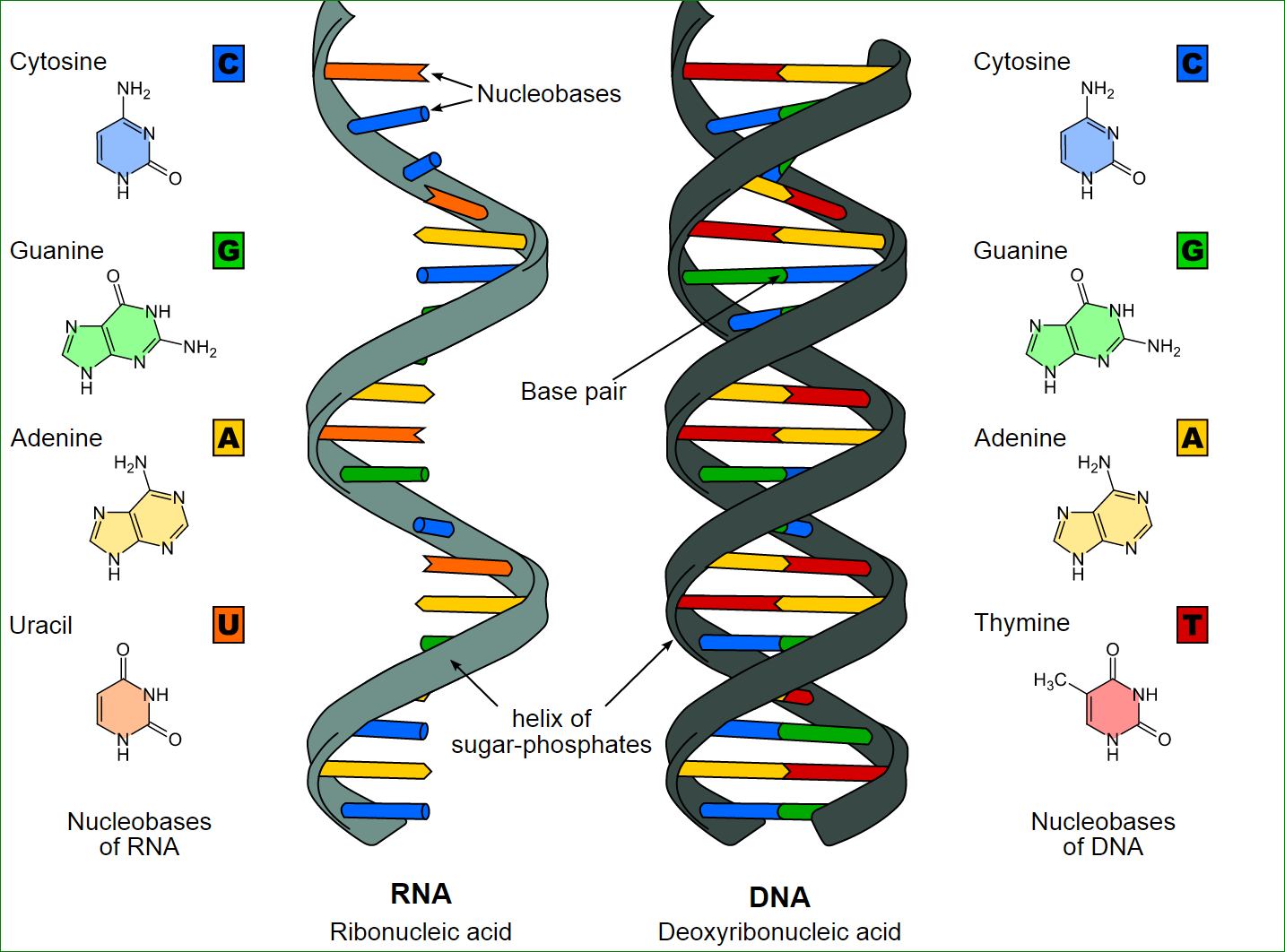






Leave a Reply